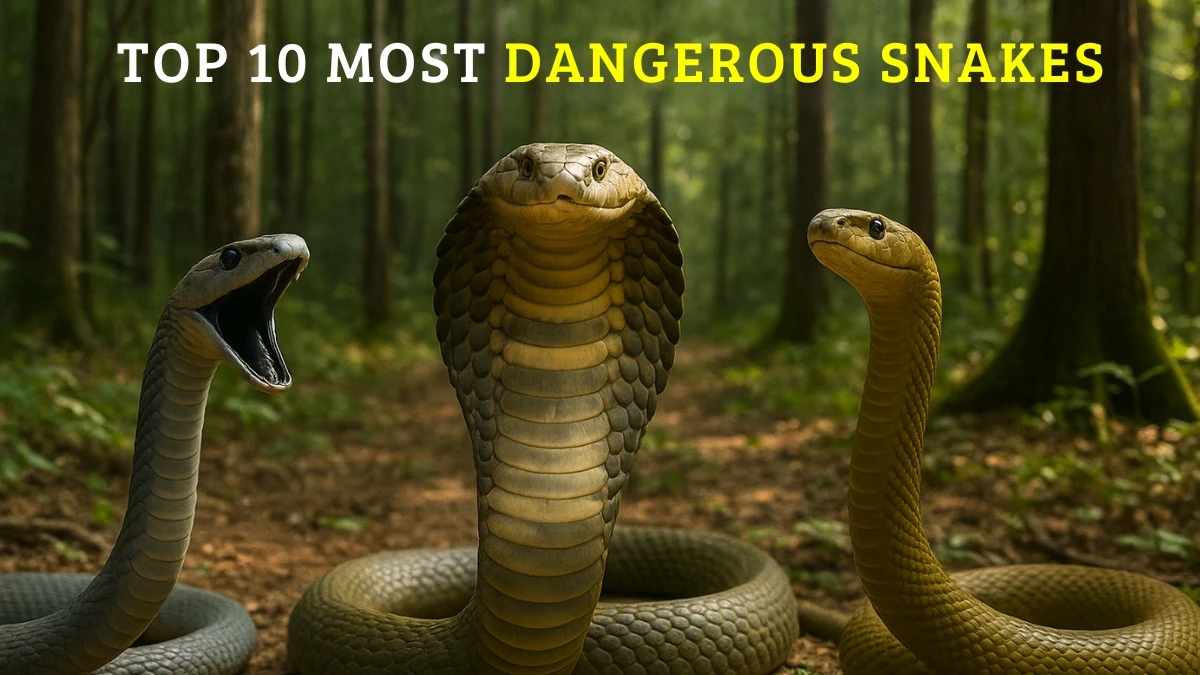Top 10 Most Dangerous Snakes in the World
Snakes are among the most feared creatures on Earth, and for good reason. While many species are harmless, some possess venom so lethal that a single bite can kill within minutes. These snakes are not only dangerous due to their toxins but also because of their speed, aggression, and proximity to human populations. Found across jungles, deserts, wetlands, and even urban areas, the threat they pose is real and often underestimated.
From the swift-striking Black Mamba to the deceptively small Saw-Scaled Viper, each snake on this list has earned its deadly reputation. Their venom affects the nervous system, blood, or vital organs, making timely treatment critical. Here are the top 10 most dangerous snakes in the world based on venom potency, fatality rates, and frequency of human encounters.
| Rank | Snake Name |
|---|---|
| 10 | Death Adder |
| 9 | Tiger Snake |
| 8 | Boomslang |
| 7 | Saw-Scaled Viper |
| 6 | Russell's Viper |
| 5 | King Cobra |
| 4 | Coastal Taipan |
| 3 | Black Mamba |
| 2 | Eastern Brown Snake |
| 1 | Inland Taipan |
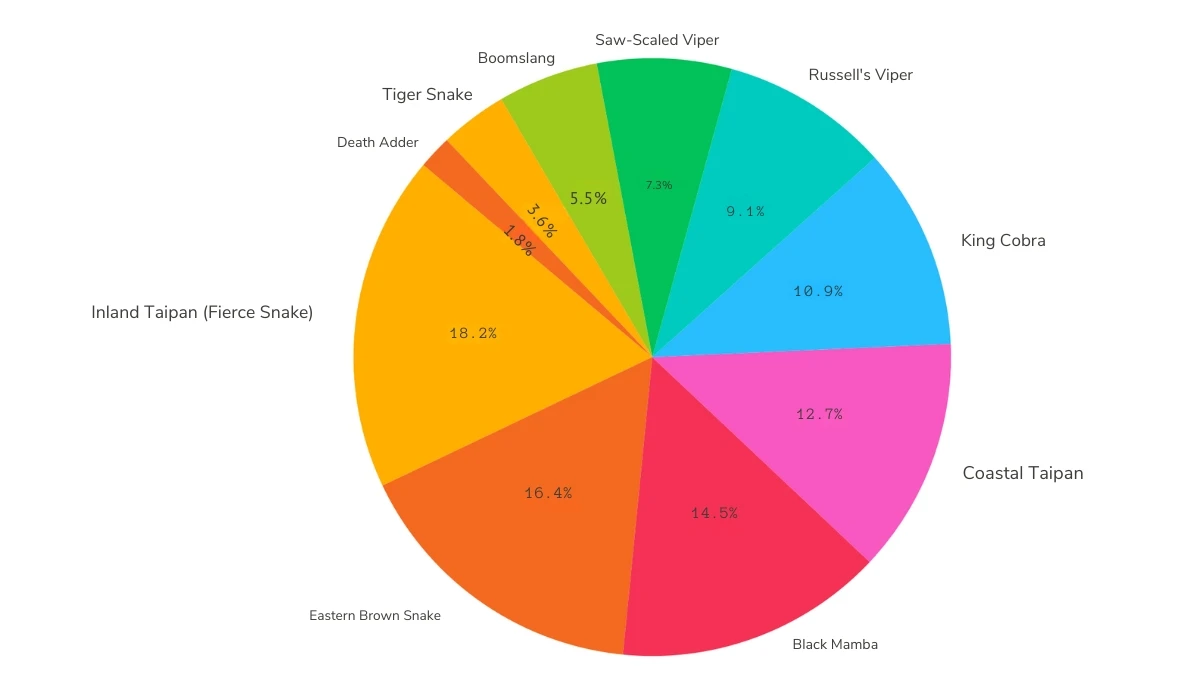
10. Death Adder
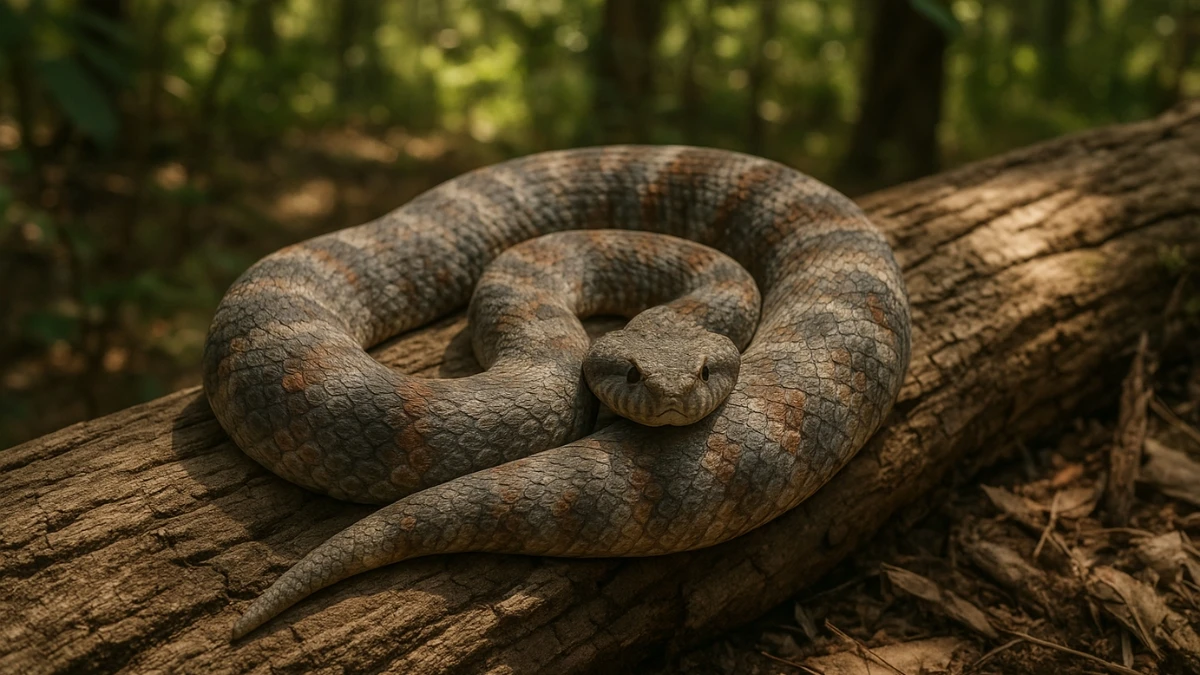
The Death Adder, found in Australia and New Guinea, is an ambush predator known for its incredibly fast strike. It uses its camouflage to remain hidden, only exposing its head and quickly striking when prey or a threat comes close.
Its venom is primarily neurotoxic, causing paralysis and potentially leading to death if untreated.
The Death Adder's lightning-fast reflexes and stealth make it one of the most dangerous snakes, and its ambush hunting style makes it a silent killer.
|
Location |
Australia and New Guinea |
|
Danger Rating |
4/5 |
|
Scientific Name |
Acanthophis |
Key Features:
- Known for ambushing prey by burying itself in the sand or leaves.
- Lightning-fast strikes can deliver a fatal dose of neurotoxins.
- Strikes are incredibly fast and often occur without warning.
- They are ambush predators, using their camouflage to surprise both prey and humans.
9. Tiger Snake

The Tiger Snake, found in southern Australia and Tasmania, is known for its potent venom, which contains a mix of neurotoxins, blood coagulants, and muscle-damaging agents.
Its venom can cause paralysis and severe tissue damage, often leading to death without prompt treatment.
These snakes are both aggressive and highly venomous, and their characteristic tiger-like stripes make them easy to identify.
Historically, they had a high fatality rate before antivenoms were developed, but they still pose a significant threat.
|
Location |
Southern Australia and Tasmania |
|
Danger Rating |
4/5 |
|
Scientific Name |
Notechis scutatus |
Key Features:
- Known for both aggression and potent venom, containing neurotoxins and coagulants.
- Their venom can cause paralysis and organ failure.
- Historically, the fatality rate was high (60%) before the introduction of antivenom.
- They often stand their ground rather than flee, which increases their danger.
8. Boomslang
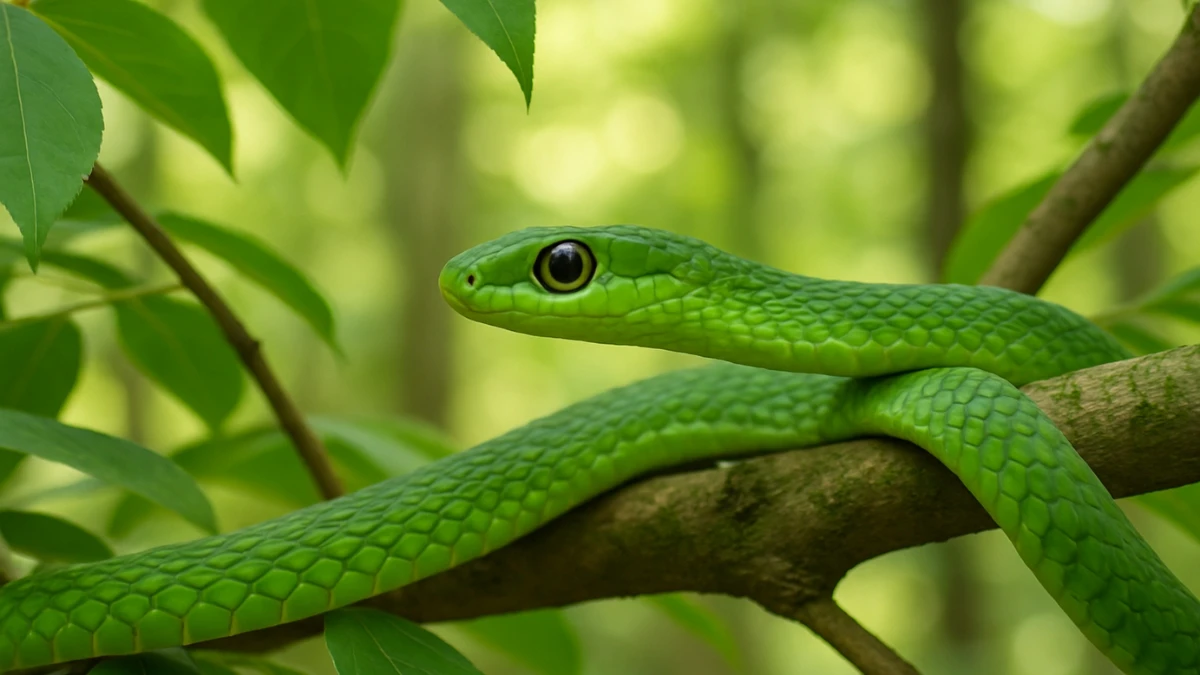
The Boomslang, native to sub-Saharan Africa, is a tree-dwelling snake known for its venom that prevents blood clotting, leading to slow internal bleeding.
Unlike many other venomous snakes, its bites may not be immediately felt, and symptoms can take hours to appear.
Once the venom takes effect, however, it can be fatal within 24 to 48 hours.
The Boomslang’s slow-acting venom makes it particularly dangerous, as victims may appear fine before suddenly collapsing from internal hemorrhaging.
|
Location |
Sub-Saharan Africa |
|
Danger Rating |
4/5 |
|
Scientific Name |
Dispholidus typus |
Key Features:
- Highly venomous, causing internal bleeding due to hemotoxic venom.
- The venom prevents blood clotting, leading to slow and painful death within 24-48 hours.
- Generally non-aggressive, but bites can be fatal if untreated.
- A famous case involves herpetologist Karl Schmidt, who died from a bite in 1957.
7. Saw-Scaled Viper
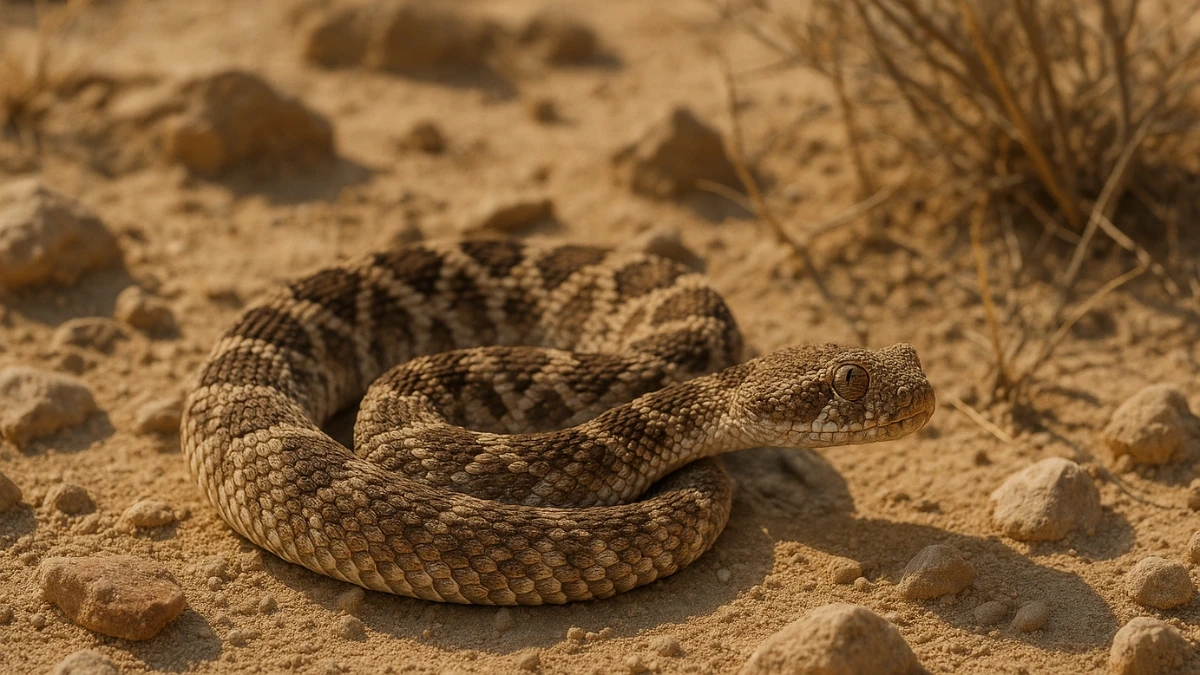
The Saw-Scaled Viper is a small yet extremely dangerous snake found in Africa, the Middle East, and India. It is known for its aggressive behavior and its ability to make a distinctive rasping sound by rubbing its scales together.
Although it is small in size, its venom can cause severe tissue damage and internal bleeding.
The Saw-Scaled Viper is responsible for more snakebite fatalities than any other species globally, largely due to its proximity to human settlements and its aggressive nature.
|
Location |
Africa, Middle East, India |
|
Danger Rating |
5/5 |
|
Scientific Name |
Echis carinatus |
Key Features:
- Small but incredibly dangerous due to its aggressive temperament.
- Known for making a rasping sound by rubbing its scales together before striking.
- Its venom causes intense pain, swelling, and can lead to organ failure and death.
- Responsible for more fatalities than any other snake worldwide.
6. Russell's Viper

Russell's Viper, found in India, Southeast Asia, and parts of China, is responsible for more snakebite fatalities in Asia than any other snake.
Its venom is a potent combination of neurotoxins and hemotoxins that can cause severe internal bleeding, organ failure, and death.
This snake is often found in agricultural areas, which increases the risk of human encounters. Its camouflage and aggressive behavior make it a particularly dangerous species, and its bites are often fatal without medical intervention.
|
Location |
India, China, Southeast Asia |
|
Danger Rating |
5/5 |
|
Scientific Name |
Daboia russelii |
Key Features:
- Known for its perfect camouflage, aggressive nature, and proximity to human settlements.
- Responsible for tens of thousands of deaths annually, particularly in rural areas.
- Its venom contains hemotoxins and neurotoxins, causing organ failure and internal bleeding.
- Bites are often fatal without treatment.
5. King Cobra
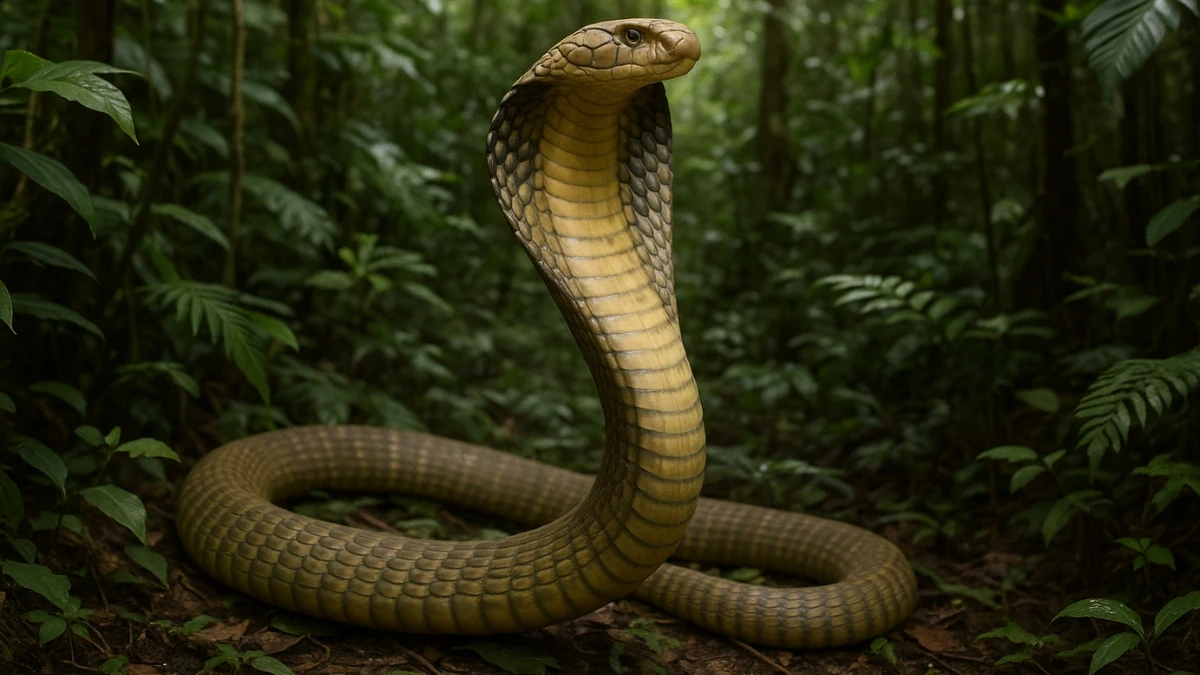
The King Cobra, the longest venomous snake in the world, can reach lengths of up to 18 feet. Found in Southeast Asia and India, its venom is potent, and a single bite can kill an Asian elephant.
Unlike some other deadly snakes, the King Cobra is highly intelligent, able to make eye contact and rear up when threatened.
It primarily preys on other snakes, including venomous species, and is a revered but feared creature across its range.
|
Location |
Forests of India and Southeast Asia |
|
Danger Rating |
5/5 |
|
Scientific Name |
Ophiophagus hannah |
Key Features:
- The longest venomous snake in the world, capable of growing up to 18 feet.
- Its venom is not as potent as some others, but it can deliver a massive amount.
- A single bite can kill an Asian elephant.
- Intelligent and capable of rearing up to 6 feet tall, maintaining eye contact with potential threats.
4. Coastal Taipan
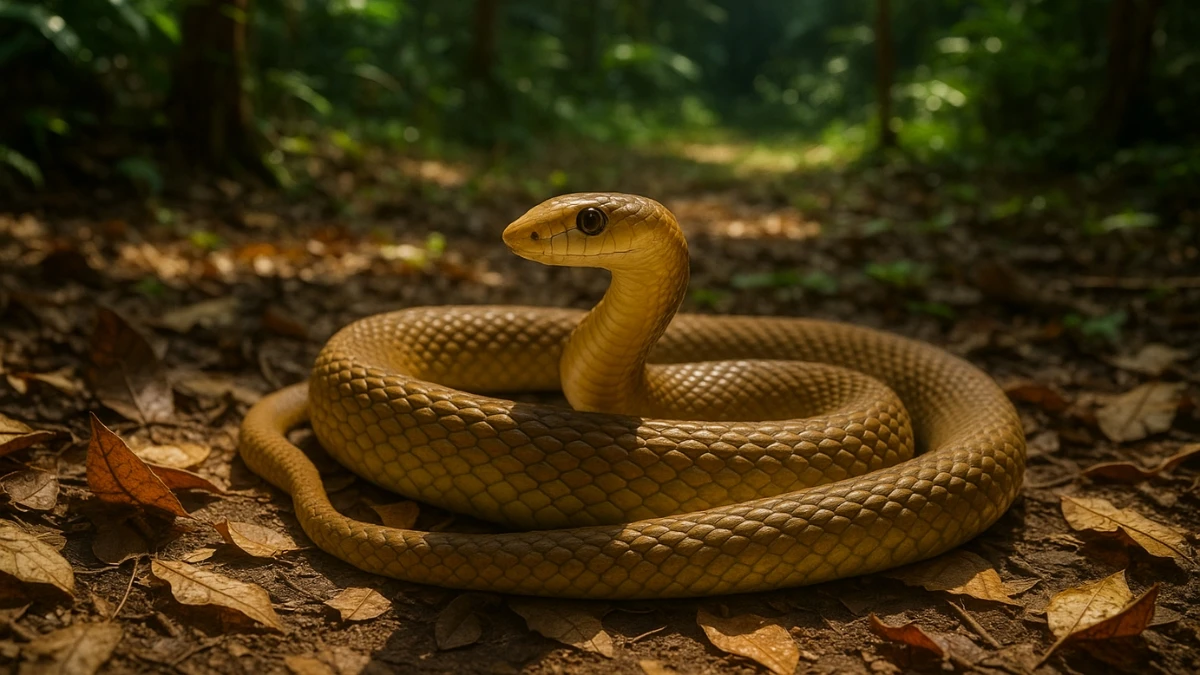
Found in northern and eastern Australia and parts of Papua New Guinea, the Coastal Taipan is one of the most venomous snakes in the world.
Its venom contains a mix of neurotoxins and blood coagulants that cause rapid organ failure and death if not treated.
Although rare, its bites were historically almost always fatal before the invention of antivenom. Known for being shy, it generally avoids humans but can be extremely dangerous if provoked or threatened.
|
Location |
Northern and eastern Australia |
|
Danger Rating |
5/5 |
|
Scientific Name |
Oxyuranus scutellatus |
Key Features:
- Highly neurotoxic venom.
- Venom contains neurotoxins and coagulants that cause rapid organ failure.
- Historically, the fatality rate was nearly 100% before antivenom was introduced.
- Rarely encountered but extremely dangerous when it occurs.
3. Black Mamba
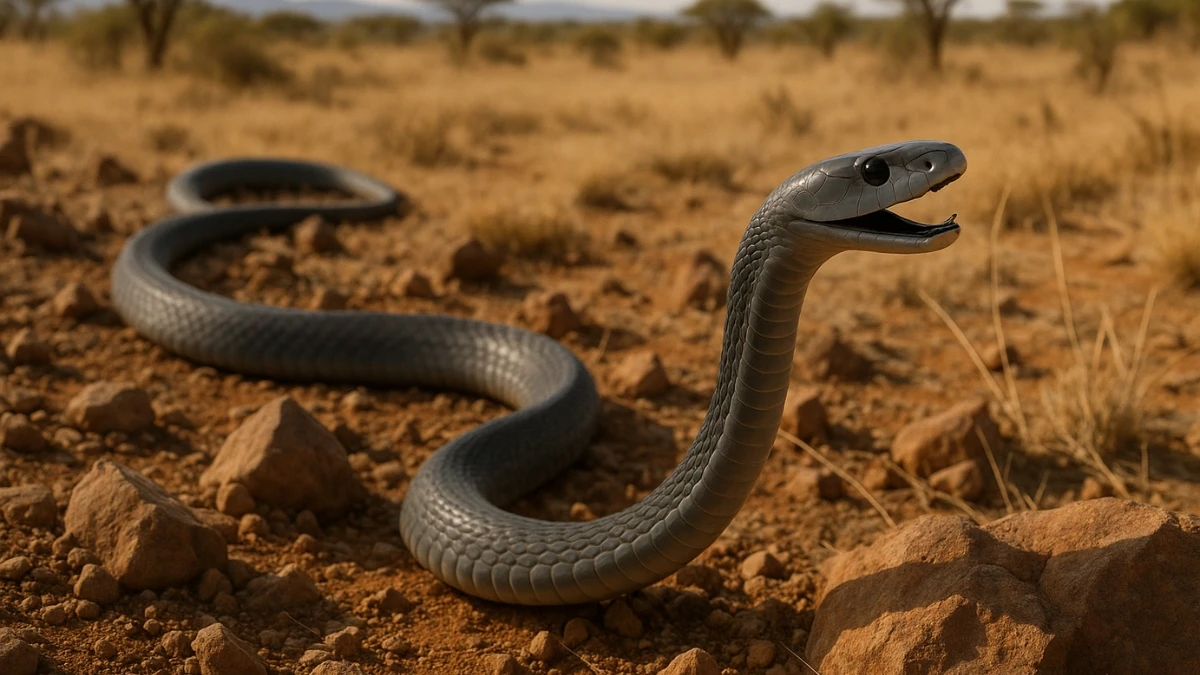
The Black Mamba, native to sub-Saharan Africa, is one of the fastest and most feared snakes globally. It can strike with incredible speed and deliver enough venom to kill 10 humans with a single bite.
The Black Mamba is not actually black; it is brown or gray in color, with the term "black" referring to the inside of its mouth.
If not treated promptly, death can occur in as little as 20 minutes due to its powerful neurotoxic venom, which leads to paralysis and respiratory failure.
|
Location |
Eastern and southern Africa |
|
Danger Rating |
5/5 |
|
Scientific Name |
Dendroaspis polylepis |
Key Features:
- Known for speed and aggression, capable of striking faster than most people can react.
- Venom can kill 10 adults with one bite.
- Typically brown or gray, but the inside of its mouth is black, giving it its name.
- Death can occur within 20 minutes if untreated.
2. Eastern Brown Snake
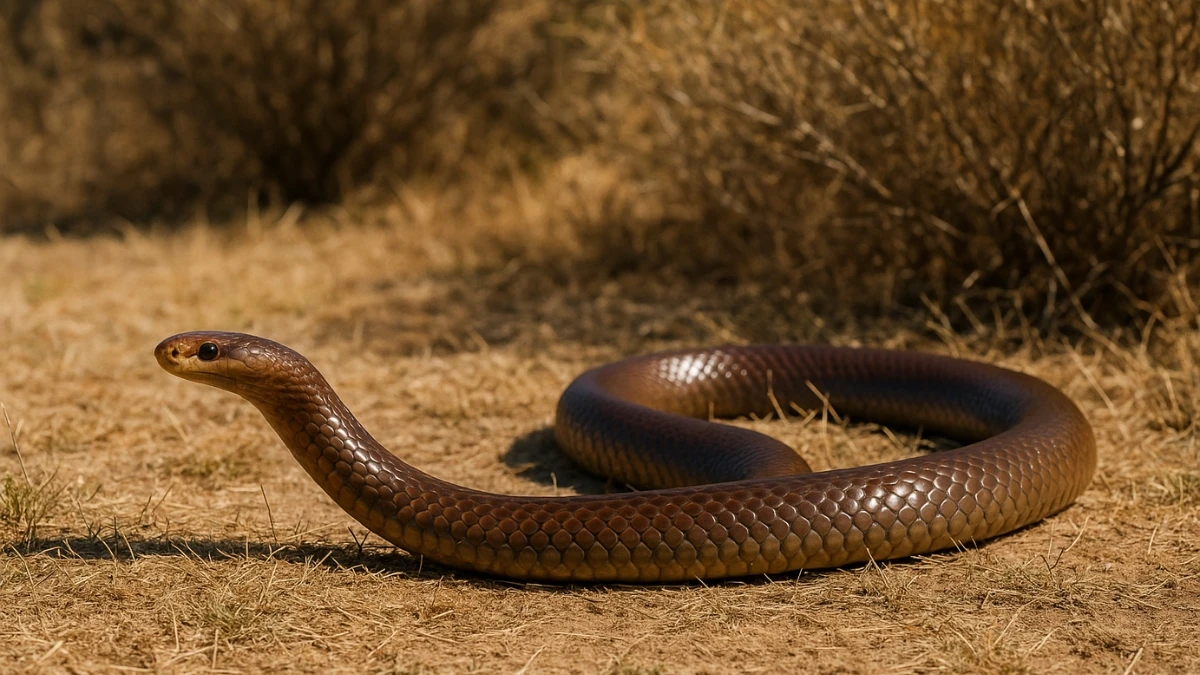
Found in eastern and central Australia, the Eastern Brown Snake is considered one of the deadliest snakes in the world due to its aggressive nature and highly potent venom.
It is responsible for more snakebite fatalities in Australia than any other species. Known for its incredible speed and territorial behavior, the Eastern Brown can chase threats at remarkable speeds.
Its venom causes rapid internal bleeding and organ failure, making immediate medical treatment essential for survival.
|
Location |
Eastern and central Australia |
|
Danger Rating |
5/5 |
|
Scientific Name |
Pseudonaja textilis |
Key Features:
- Responsible for 60% of snakebite deaths in Australia.
- Fast, aggressive, and territorial.
- Can chase perceived threats at speeds of 12 mph.
- Venom is highly potent and acts quickly; fatality rate was once 80% without antivenom.
1. Inland Taipan
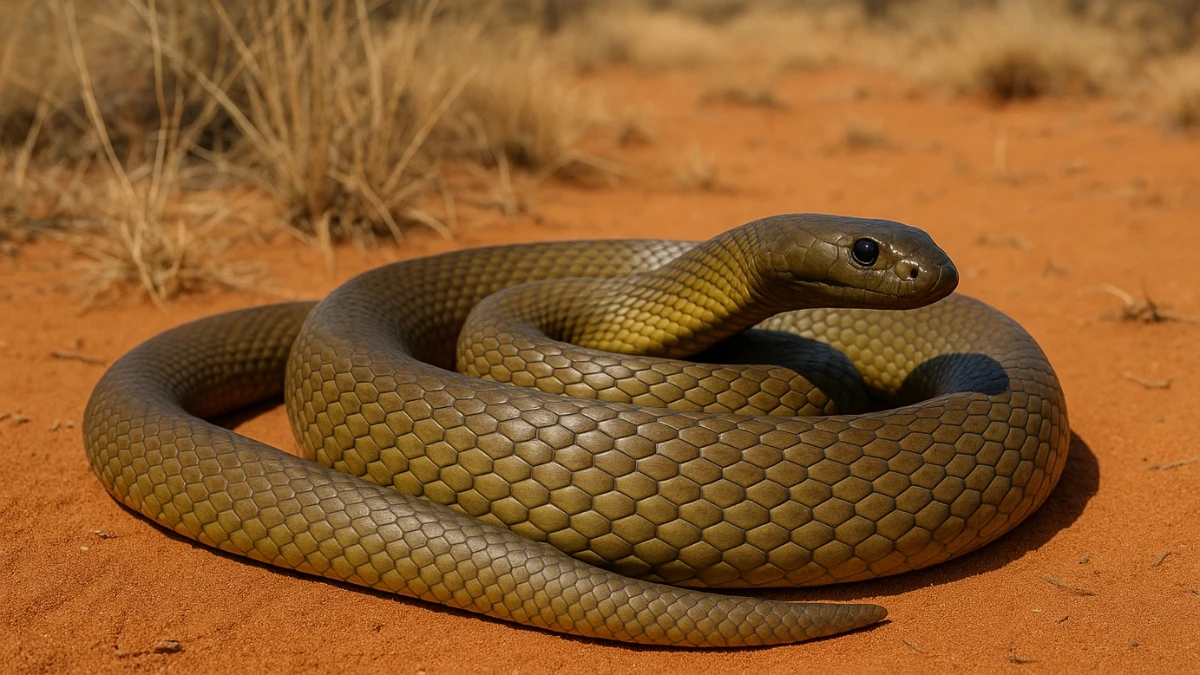
Native to central Australia, the Inland Taipan is renowned for having the most toxic venom of any land snake in the world.
A single bite from this elusive and reclusive serpent can deliver enough venom to kill 100 humans.
Fortunately, it is rarely encountered by humans due to its remote habitat.
The Inland Taipan has a fearsome reputation, but it is typically calm and tends to flee when threatened, making it less of an immediate danger than many other venomous snakes.
|
Location |
Eastern and central Australia |
|
Danger Rating |
5/5 |
|
Scientific Name |
Oxyuranus microlepidotus |
Key Features:
- Most toxic venom of any land snake.
- Venom can kill 100 adult humans with a single bite.
- Generally reclusive and avoids human contact.
- Has a calm demeanor but will flee if threatened.
Essential First Aid for Snake Bites: 5 Crucial Steps to Survival
- Stay Calm: Panic increases heart rate and spreads venom faster
- Remove Jewelry: Swelling happens quickly
- Immobilize the Limb: Keep the bite below heart level
- Seek Immediate Medical Care: Time is everything
- Don't: Cut the wound, suck out venom, or apply ice
Disclaimer:
This content is for educational and informational purposes only. The snakes listed are considered dangerous due to their venom toxicity, behavior, and impact on humans. However, most snakes, including those on this list, will not attack unless provoked or threatened. Always respect wildlife, and do not attempt to approach or handle any wild snake. For accurate identification or emergencies, consult trained professionals or local wildlife authorities.

